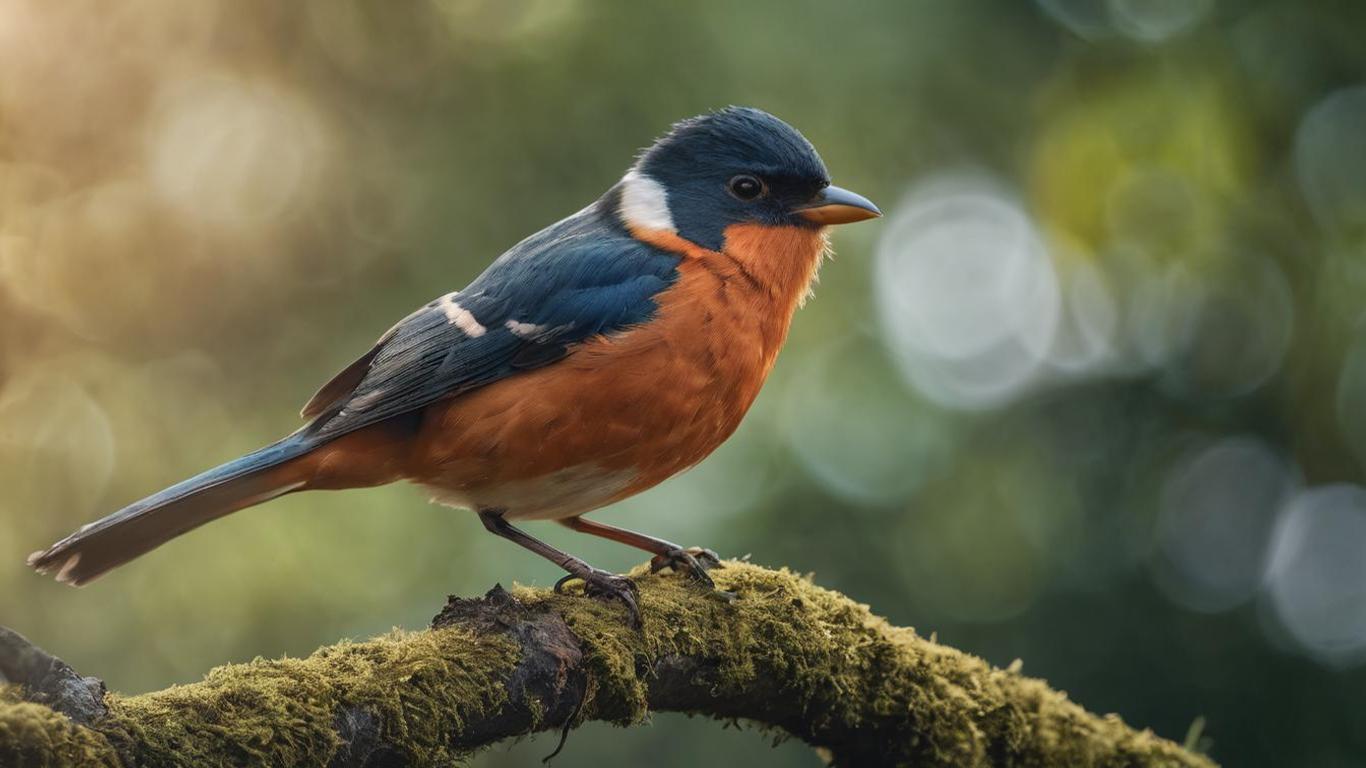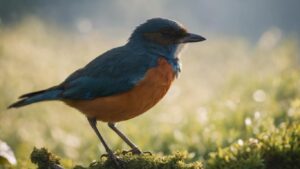
The Importance of Birds in Ecosystems
Contents
- 1 Bird-mediated pollination and seed dispersal: Exploring the role of birds in maintaining plant diversity
- 2 Controlling insect populations: How birds contribute to pest control in ecosystems
- 3 Nutrient cycling and decomposition: Unveiling the impact of birds on nutrient redistribution in ecosystems
- 4 Indicators of ecosystem health: Understanding how bird populations reflect the overall well-being of an ecosystem
- 5 Regulating plant populations: The influence of birds on plant growth and population dynamics
- 6 Impact on food webs: Examining the intricate connections between birds, their prey, and other trophic levels
- 7 Ecological succession: Unraveling the role of birds in shaping the trajectory of ecosystem development
- 8 Habitat creation and maintenance: How birds contribute to the formation and preservation of diverse habitats
- 9 Climate change resilience: Exploring the adaptive strategies of birds and their significance in the face of environmental shifts
- 10 Cultural and economic value: Recognizing the broader significance of birds in human societies and economies
Bird-mediated pollination and seed dispersal: Exploring the role of birds in maintaining plant diversity
Birds play a critical role in maintaining plant diversity through their contribution to bird-mediated pollination and seed dispersal. As pollinators, birds facilitate the transfer of pollen between flowers, enabling plants to reproduce and produce seeds. They are particularly important in areas where other pollinators, such as bees, are limited or absent. Birds have distinct foraging behaviors and feeding preferences, which often lead them to visit flowers that other pollinators overlook. This unique foraging behavior increases the chances of cross-pollination and genetic diversity among plant populations, ultimately contributing to the overall health and resilience of ecosystems.
In addition to pollination, birds also serve as efficient seed dispersers. They consume fruits or seeds from various plant species and later transport the undigested seeds to new locations through their droppings. This dispersal mechanism allows plants to colonize new habitats, escape competition, and increase their distribution range. Birds, with their ability to cover long distances, can transport seeds to remote areas, contributing to the establishment and maintenance of diverse plant communities. By providing spatial heterogeneity and allowing for genetic exchange, bird-mediated seed dispersal plays a fundamental role in maintaining plant diversity and promoting ecosystem functioning.
Controlling insect populations: How birds contribute to pest control in ecosystems
Birds play a crucial role in controlling insect populations in ecosystems. Many bird species are known to feed on various insects, including pests that can harm crops or transmit diseases. By preying on insects, birds help to keep their numbers in check, preventing potential outbreaks and reducing the need for chemical pesticides. This natural form of pest control not only benefits agricultural systems but also contributes to the overall health and balance of ecosystems.
The foraging behavior of birds is well adapted to target different insect species. They can consume a wide range of pests, such as aphids, caterpillars, beetles, and mosquitoes, among others. Birds employ different feeding strategies, such as picking insects off plants, aerial insectivory, and probing tree bark. Their feeding habits are often influenced by habitat structure, seasonality, and availability of prey. In addition to directly consuming insects, birds also indirectly control their populations by targeting their eggs and larvae. This multifaceted approach to pest control demonstrates the important role birds play in maintaining the delicate ecological balance within ecosystems.
Nutrient cycling and decomposition: Unveiling the impact of birds on nutrient redistribution in ecosystems
Birds play a crucial role in nutrient cycling and decomposition within ecosystems. Through their feeding habits and activities, they contribute to the redistribution of nutrients, promoting nutrient availability and cycling in various habitats. As birds consume fruits, seeds, and other plant materials, they excrete waste containing valuable nutrients such as nitrogen and phosphorus. This process, known as defecation, disperses these nutrients across the landscape, benefiting surrounding vegetation and soil. Moreover, birds contribute to decomposition by scavenging on carrion, accelerating the breakdown of organic matter and facilitating nutrient release back into the ecosystem. Overall, birds act as important agents in the nutrient cycle, ensuring the balance and vitality of ecosystems.
In addition to their direct contributions to nutrient redistribution, birds indirectly impact decomposition through their foraging behaviors. By consuming insects and other invertebrates, birds help regulate their populations, reducing their impact on plant matter and promoting decomposition. Insect feeding by birds not only controls pest populations but also enhances the breakdown of plant debris, facilitating microbial activity and decomposition processes. Furthermore, birds are known to engage in behaviors such as probing and scratching, which stir up leaf litter and soil, promoting the breakdown of organic matter and exposing it to decomposers. Through these activities, birds play a vital role in maintaining the delicate balance of nutrient cycling and decomposition in ecosystems.
Indicators of ecosystem health: Understanding how bird populations reflect the overall well-being of an ecosystem
Bird populations serve as valuable indicators of ecosystem health, reflecting the overall well-being of an ecosystem. The presence and abundance of birds can provide crucial insights into the quality of habitats, ecosystem stability, and the availability of resources. A thriving and diverse bird community often indicates a healthy and balanced ecosystem, while declines in bird populations may signify underlying issues that require attention.
Birds play various ecological roles, such as pollination, seed dispersal, and insect control, which are fundamental for the functioning of ecosystems. Their presence ensures the reproductive success and genetic diversity of plant species through pollination. Additionally, birds aid in seed dispersal, helping plants colonize new areas and sustain their populations. Moreover, birds contribute to pest control by preying on insects, thus keeping their populations in check. Monitoring changes in bird populations enables scientists to assess the health and functioning of ecosystems and detect early signs of disruption or degradation. Through understanding the relationship between bird populations and ecosystem health, we can make informed decisions to protect and restore these vital ecological systems.
Regulating plant populations: The influence of birds on plant growth and population dynamics
Birds play a vital role in regulating plant populations by influencing their growth and population dynamics. Through their feeding behaviors, birds help control plant populations by dispersing seeds and reducing competition among plants. When birds consume and transport seeds, they inadvertently aid in the dispersal of seeds to new locations. This process allows for plant colonization and diversification in different habitats, ultimately contributing to the overall biodiversity of ecosystems. Furthermore, birds can selectively consume certain plant species, promoting the growth of others that may be of ecological importance. By regulating plant populations, birds help maintain the balance and stability of ecosystems.
In addition to seed dispersal, birds also contribute to plant population dynamics through their foraging activities. Some bird species feed on plant materials such as buds, leaves, and fruits, which can have a significant impact on plant growth. By selectively feeding on certain parts of plants, birds can influence the reproductive success and survival of particular plant species. This selective pressure can lead to changes in the genetic composition of plant populations over time. The interactions between birds and plant populations are complex and dynamic, highlighting the intricate relationships within ecosystems. Understanding the influence of birds on plant growth and population dynamics is crucial for comprehending the mechanisms that drive ecosystem stability and resilience.
Impact on food webs: Examining the intricate connections between birds, their prey, and other trophic levels
Birds play a vital role in food webs as they serve as both predators and prey, connecting multiple trophic levels. As predators, birds feed on various organisms, including insects, small mammals, and even other birds. This predation helps regulate the populations of their prey, preventing outbreaks that can have cascading effects on the entire ecosystem. Additionally, birds often act as indicators of ecosystem health, as changes in their population sizes or diversity can signal disruptions in food availability or habitat quality. For instance, declines in certain bird populations may indicate a decrease in prey abundance or changes in vegetation structure, impacting not just the birds themselves but also the organisms that rely on them as a food source.
On the other hand, birds also serve as a source of prey for other organisms, particularly predators higher up in the food chain. Their presence and abundance can influence the behavior and distribution of these higher-level predators, as they will seek out areas with ample bird populations to satisfy their own dietary needs. This creates a complex network of interactions where birds are not only consuming their own prey but also serving as a crucial component in the diets of other predators. Therefore, the presence and interactions of birds within food webs have far-reaching effects, shaping the dynamics and stability of entire ecosystems.
Ecological succession: Unraveling the role of birds in shaping the trajectory of ecosystem development
Ecological succession is a fundamental process in the development of ecosystems, involving predictable changes in species composition and community structure over time. Birds play a crucial role in shaping this trajectory through their interactions with plants and other organisms. As primary seed dispersers, birds aid in the colonization of new areas by carrying seeds in their beaks or digestive systems and depositing them in different locations. This dispersal facilitates the establishment of plant species in areas where they may not have been able to reach on their own. In this way, birds contribute to the initial stages of succession, promoting the establishment of a diverse range of plant species and setting the foundation for the development of a resilient ecosystem.
Furthermore, birds also act as vectors for pollination, transferring pollen between plants and aiding in the reproduction of flowering species. By visiting flowers in search of nectar or insects, birds inadvertently collect and transport pollen, facilitating cross-pollination and increasing genetic diversity within plant populations. This process is essential in the early stages of ecological succession, where pioneer plants often rely on insect- or wind-assisted pollination. By broadening the range of plant genetic material available, birds contribute to the resilience of plant communities, ensuring the development of a robust and self-sustaining ecosystem. Their role in facilitating pollination and seed dispersal highlights the intricate web of interactions that drive ecological succession and underscores the importance of birds in shaping the trajectory of ecosystem development.
Habitat creation and maintenance: How birds contribute to the formation and preservation of diverse habitats
Birds play a crucial role in the creation and maintenance of diverse habitats. Through their foraging behaviors, birds spread seeds across different areas, aiding in the establishment of new plant populations. As they move from one location to another, birds unintentionally disperse seeds in their droppings, ensuring the dispersal of plants over larger areas. This process, known as ornithochory, results in the colonization of new habitats by various plant species, contributing to habitat diversity.
In addition to seed dispersal, birds also contribute to habitat creation by constructing nests. Some bird species, such as woodpeckers and cavity-nesting birds, excavate holes in trees or use pre-existing cavities to build their nests. These nests provide shelter for a variety of other organisms, such as insects, small mammals, and reptiles. By creating these nesting sites, birds directly influence the structure and composition of habitats, supporting the establishment and survival of other species. Furthermore, the abandoned nests of birds serve as potential homes for other birds, allowing for multiple generations to utilize the same habitat. Overall, the activities of birds have a profound impact on the formation and preservation of diverse habitats.
Climate change resilience: Exploring the adaptive strategies of birds and their significance in the face of environmental shifts
Birds are remarkable creatures that have shown incredible adaptability in the face of environmental shifts caused by climate change. Their ability to adjust their behaviors, patterns, and physiology to changing conditions is a testament to their resilience. For instance, many bird species have modified their migration patterns, altering their timing and routes to coincide with the shifting availability of food resources. This adaptive strategy allows birds to maximize their chances of survival and successfully reproduce in a changing environment.
In addition to altering their migration patterns, birds have also been observed changing their breeding behaviors in response to climate change. Some species have advanced their breeding seasons, taking advantage of warmer temperatures and earlier onset of food availability. This shift in timing ensures that the birds are able to provide enough food for their offspring during crucial developmental stages. These adaptive strategies highlight the remarkable resilience of birds and their ability to cope with the challenges posed by climate change. As climate change continues to shape our planet, understanding and appreciating these adaptive strategies becomes crucial in assessing the overall impact and future prospects of bird populations.
Cultural and economic value: Recognizing the broader significance of birds in human societies and economies
Birds have long held cultural and economic value in human societies and economies. In cultures around the world, birds are often seen as symbols of freedom, beauty, and spirituality. They have been revered in myths, legends, and art, representing qualities and characteristics that resonate with human aspirations. Furthermore, birds play a vital role in various cultural practices, such as bird-watching and bird photography, which have become popular recreational activities and tourism attractions. These activities not only bring joy and relaxation to enthusiasts but also generate substantial economic benefits by attracting visitors and supporting local businesses.
From an economic perspective, birds have significant contributions to various industries and sectors. In agriculture, birds can help control pests naturally, reducing the need for synthetic pesticides and promoting sustainable farming practices. This not only saves farmers money but also minimizes the negative impacts of chemical applications on environmental and human health. Additionally, bird-related industries, including bird feeders, birdhouses, birdseed, and birdwatching equipment, contribute to the global economy by providing employment opportunities and generating revenue. Bird tourism, in particular, has become a growing sector, with birding destinations attracting tourists from all over the world who are eager to observe and learn about different bird species in their natural habitats. The money spent on accommodations, transportation, and birding-related services creates economic opportunities for local communities and supports conservation efforts.



Average Rating